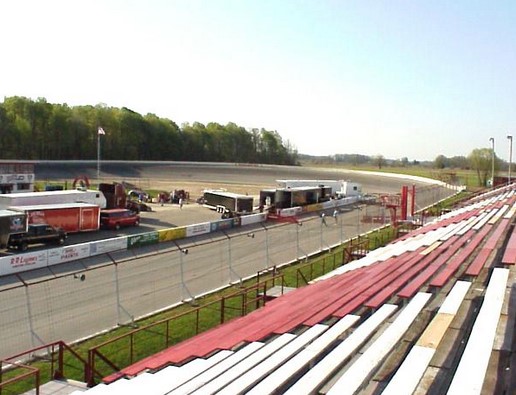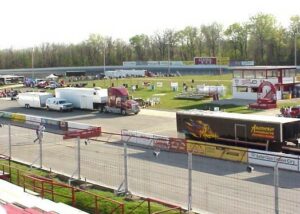
Spectator Restrictions at Winchester Speedway
Winchester Speedway, with its rich history and passionate fan base, has long been a hub for exciting racing action. However, the world changed in 2020 with the global COVID-19 pandemic, forcing event organizers and venues to adapt and implement safety measures to protect everyone involved. This included spectator restrictions to ensure that racing could continue while keeping attendees safe. In this comprehensive article, we’ll delve into the world of spectator restrictions at Winchester Speedway, examining the measures put in place to balance the thrill of racing with the health and well-being of fans.

The Impact of COVID-19
The COVID-19 pandemic, which emerged in early 2020, brought the world to a standstill. Sporting events, including motorsports, were significantly affected, and Winchester Speedway was no exception. The health and safety of all those involved, from drivers and crew members to spectators, became a paramount concern.
Spectator Restrictions: A Necessity
Spectator restrictions became a necessary response to the pandemic, ensuring that racing events could continue while minimizing the risk of viral transmission. These measures varied over time, adapting to the evolving understanding of COVID-19 and the changing public health landscape.
1. Limited Capacity
One of the primary ways to ensure social distancing and minimize the risk of viral spread was to limit the number of spectators allowed at each race. Winchester Speedway, like many other venues, implemented reduced capacity measures, allowing only a fraction of the usual crowd size.
2. Social Distancing
Social distancing became a central component of spectator restrictions. Winchester Speedway marked seats and spectator areas to maintain safe distances between attendees, promoting a minimum distance of six feet between individuals or groups.
3. Mask Mandates
The use of face masks or coverings became mandatory for spectators. Attendees were required to wear masks at all times, except when actively eating or drinking. This was a crucial measure to reduce the potential spread of respiratory droplets.
4. Health Screenings
Spectators were often subject to health screenings upon entry to the venue. These screenings typically included temperature checks and health questionnaires to identify individuals with potential COVID-19 symptoms.
5. Seating Assignments
To further ensure social distancing, spectators were often assigned specific seating locations to prevent crowding and maintain safe distances between different groups.
6. Contactless Transactions
Contactless transactions became the norm, including ticket purchases and concessions. This minimized direct person-to-person contact and the exchange of cash or cards.
7. Designated Entrances and Exits
Separate entrances and exits were established to facilitate one-way traffic flow and prevent congestion at ingress and egress points.
8. Enhanced Sanitization
Venues, including Winchester Speedway, increased their sanitization efforts. This included the frequent cleaning of high-touch surfaces, such as handrails and restroom facilities.
9. Communication and Education
Clear and consistent communication was key. Spectators were provided with information regarding the safety measures in place and were educated on their role in adhering to these measures.
10. Compliance and Enforcement
Event organizers and venue staff played a crucial role in enforcing spectator restrictions. Non-compliance with safety measures, including refusal to wear masks or maintain social distance, could result in ejection from the venue.
The Challenges of Balancing Safety and Tradition
While spectator restrictions were essential for public health, they posed significant challenges. Racing is not just a sport; it’s a community and a tradition. For many fans, attending races at Winchester Speedway is an annual tradition that brings families and friends together. The absence of this communal experience due to spectator restrictions was a difficult adjustment.
The Fan Experience
The fan experience at Winchester Speedway, with its vibrant atmosphere, thrilling races, and camaraderie, is a cherished part of the sport. Spectator restrictions meant that this experience had to be modified. The absence of the roar of the crowd and the cheers of fans in close proximity to the action had an undeniable impact on the ambiance.
Supporting the Sport
Despite the challenges, racing fans demonstrated their unwavering support for the sport. Many understood the necessity of spectator restrictions and recognized that they were crucial to keeping racing events going during the pandemic.
Adapting to Change
Winchester Speedway and its fans adapted to the changes brought about by spectator restrictions. Livestreaming and virtual experiences allowed fans to stay connected to the racing action, even when they couldn’t attend in person.
Looking to the Future
As the world moves beyond the pandemic, there is hope for a return to a more traditional fan experience at Winchester Speedway. Spectator restrictions, while necessary, have tested the resilience of the racing community. It has demonstrated that, even in the face of adversity, the love for motorsports endures.
Conclusion: The Resilience of Racing
Spectator restrictions at Winchester Speedway, as at racing venues around the world, were an unprecedented challenge. They disrupted traditions, changed the fan experience, and tested the dedication of racing enthusiasts. However, they were also a necessary measure to protect public health and ensure that racing events could continue. As we move forward, the resilience of the racing community and its unwavering support for the sport stand as a testament to the enduring spirit of motorsports. Winchester Speedway, like all racing venues, looks to the future with the hope of once again hosting full-capacity crowds and returning to the traditions that make racing a beloved American pastime.
